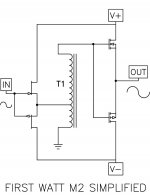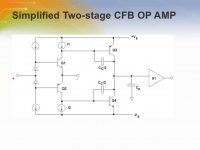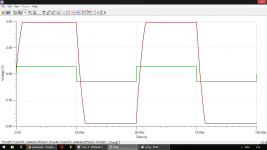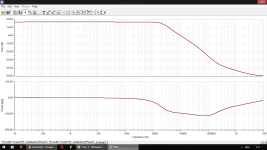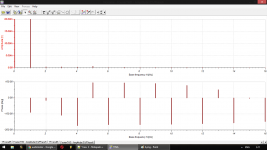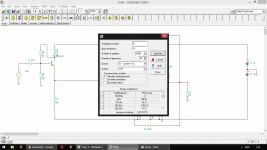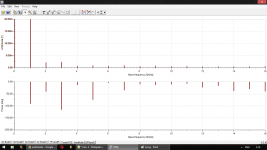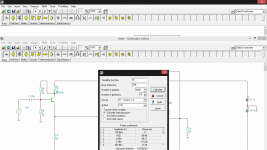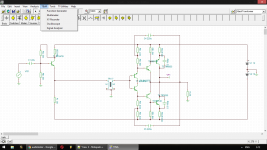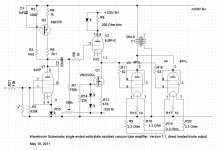why do you belive in "can be" jan? - care to list available gain devices fundamental relations?
I think you will find gm for all of them is a power law - not inherently linear
and not reliably correctable by even order cancellation since even fet and tubz "square law " is only an approximation
He said 'low distortion can be achieved with NFB' .
Jan
The only way to make a linear amplifier is to make it with a feedback.
Other question is do we need that ?
I think the both are good but like more the feedback [;
Other question is do we need that ?
I think the both are good but like more the feedback [;
The only way to make a linear amplifier is to make it with a feedback.
One guy disagreed and wrote a whole book about how to make extremely linear amps without global feedback:
https://linearaudio.net/books/2220
Jan
PS The book will be back in stock next week.
The only way to make a good amplifier is to carefully evaluate what one has in hand and go from there. Feedback and non-feedback theories applied to amplifiers are NOT science, they are engineering because the basic elements are those provided by technology (which the consequence of applied science), with their technical pros and cons, and cannot be changed but only used in best possible way.
I will do it tomorrow...
[root@www music]# ls -al bruno.*
-rwxr-xr-x. 1 root root 439403547 Nov 6 2012 bruno.wav.gz
[root@www music]#
Not much. 🙂
Just upload it on youtube.
You can even make it private.
As a general rule, you can assume that anyone who dislikes feedback does so because he does not understand feedback. This is still true even if the person concerned thinks that he does understand feedback.
The most linear and ideal component we have is a resistor. If we want linear amplification (and we do want linear amplification if high fidelity sound reproduction is our goal) then why not make a circuit whose gain is set by nice linear resistors rather than nasty nonlinear things like BJTs or triodes or transformers? Once you realise this, negative feedback seems so obvious a tool that it seems daft to deliberately avoid it - except for those who don't understand it and so have to avoid it, or those whose goal is not high fidelity sound reproduction.
The most linear and ideal component we have is a resistor. If we want linear amplification (and we do want linear amplification if high fidelity sound reproduction is our goal) then why not make a circuit whose gain is set by nice linear resistors rather than nasty nonlinear things like BJTs or triodes or transformers? Once you realise this, negative feedback seems so obvious a tool that it seems daft to deliberately avoid it - except for those who don't understand it and so have to avoid it, or those whose goal is not high fidelity sound reproduction.
One guy disagreed and wrote a whole book about how to make extremely linear amps without global feedback:
https://linearaudio.net/books/2220
Jan
PS The book will be back in stock next week.
General question , did that author developed some SS power amp where each stage of amp including OPS operate strictly in A class ?
Regards
General question , did that author developed some SS power amp where each stage of amp including OPS operate strictly in A class ?
Regards
Not only that, he also developed circuits where many of the circuits operating parameters like Vce or |Pd are constant over the signal cycle.
That in itself does do a lot to linearize an active device.
If you look at the ToC you get an idea of the width and dept of his work.
Jan
Indeed. 🙂
What happens? Nirvana! Clap by one hand? No voltage! Just a music. Like alive. ;-)
Sure, if you agree to burn electricity instead of an excess gain. Free cheese is only in a mousetrap. 😛
...but... still, you are hiding your feedback inside of your triodes. 🙂
I agree on a contest; your pure triode amp without intentional feedbacks VS my pentode amp with nested feedbacks. Are you ready?
Who cares about amplifier burning electricity at 15c/kwh?
The argument about whether there is or there is no intrinsic NFB in triodes is an old one, and there is no point in resurrecting it. I am on the side that believes that there is no feedback.
Are you talking about your 4P10S amplifier, the one "Темная ночь, один пуля застрял в провода.."? Why not posting a schematic?
A pentode power stage can work w/o NFB of any kind, and sound as good or even better than one with feedback. With a right speaker.
please offer another explanation of properly biased AC gnded screen grid, pentode gain mu and plate Z compared to the same "triode strapped?
people do try to redefine local negative feedback so they don't have to think about their inconsistency in using it while dissing "global feedback"
The argument about whether there is or there is no intrinsic NFB in triodes is an old one, and there is no point in resurrecting it. I am on the side that believes that there is no feedback.
people do try to redefine local negative feedback so they don't have to think about their inconsistency in using it while dissing "global feedback"
Last edited:
There is feedback. How much open loop gain, and hence distortion reduction, depends on the anode load.sser2 said:The argument about whether there is or there is no intrinsic NFB in triodes is an old one, and there is no point in resurrecting it. I am on the side that believes that there is no feedback.
You would need an unusually linear pentode, and a speaker which has so much mechanical damping that it cannot be used with a conventional amplifier. Even then it would only sound as good, not better, than a more conventional system.A pentode power stage can work w/o NFB of any kind, and sound as good or even better than one with feedback. With a right speaker.
You would need...cut....a speaker which has so much mechanical damping that it cannot be used with a conventional amplifier.
That's a myth.
One guy disagreed and wrote a whole book about how to make extremely linear amps without global feedback:
https://linearaudio.net/books/2220
Jan
PS The book will be back in stock next week.
Jan, you cannot make it better than a NFB one.
Jan, you cannot make it better than a NFB one.
NFB = Negative FeedBack?
I don't know, is there proof for that? (I think I can prove it, but can you?). 😉
Jan
Yes, there is, if you know how the NFB works.
I am not going to proove anything because I dont have time.
BTW, the closed loop is an open loop when the output voltage becames the same. ;]
I am not going to proove anything because I dont have time.
BTW, the closed loop is an open loop when the output voltage becames the same. ;]
Like this one I simulated:
THD is measured at half power.
As follows:
0.018% 1khz
0.080% 20khz
The squares are 20khz ones.
THD is measured at half power.
As follows:
0.018% 1khz
0.080% 20khz
The squares are 20khz ones.
Attachments
sser2 said:Are you talking about your 4P10S amplifier, the one "Темная ночь, один пуля застрял в провода.."? Why not posting a schematic?
Can be this one, if you offer a 5W per channel amp for a contest. Can be some other one. I described all details of the schematic; can't you draw it? 😀
A pentode power stage can work w/o NFB of any kind, and sound as good or even better than one with feedback. With a right speaker.
True. Depends on a speaker. But strictly speaking, if you want to reproduce records to fool imagination, "sounds nice" is not enough. It is not a high end amp, it is rather a musical instrument that adds to any music own "character".
Edit: here is a schematic of my 5W per channel "No feedback" amp attached. It is much more complex than a pentode one, with nested feedbacks... But both sound equally clean and transparent.
Attachments
Last edited:
- Status
- Not open for further replies.
- Home
- Member Areas
- The Lounge
- Bruno Putzeys paper on Negative Feedback
